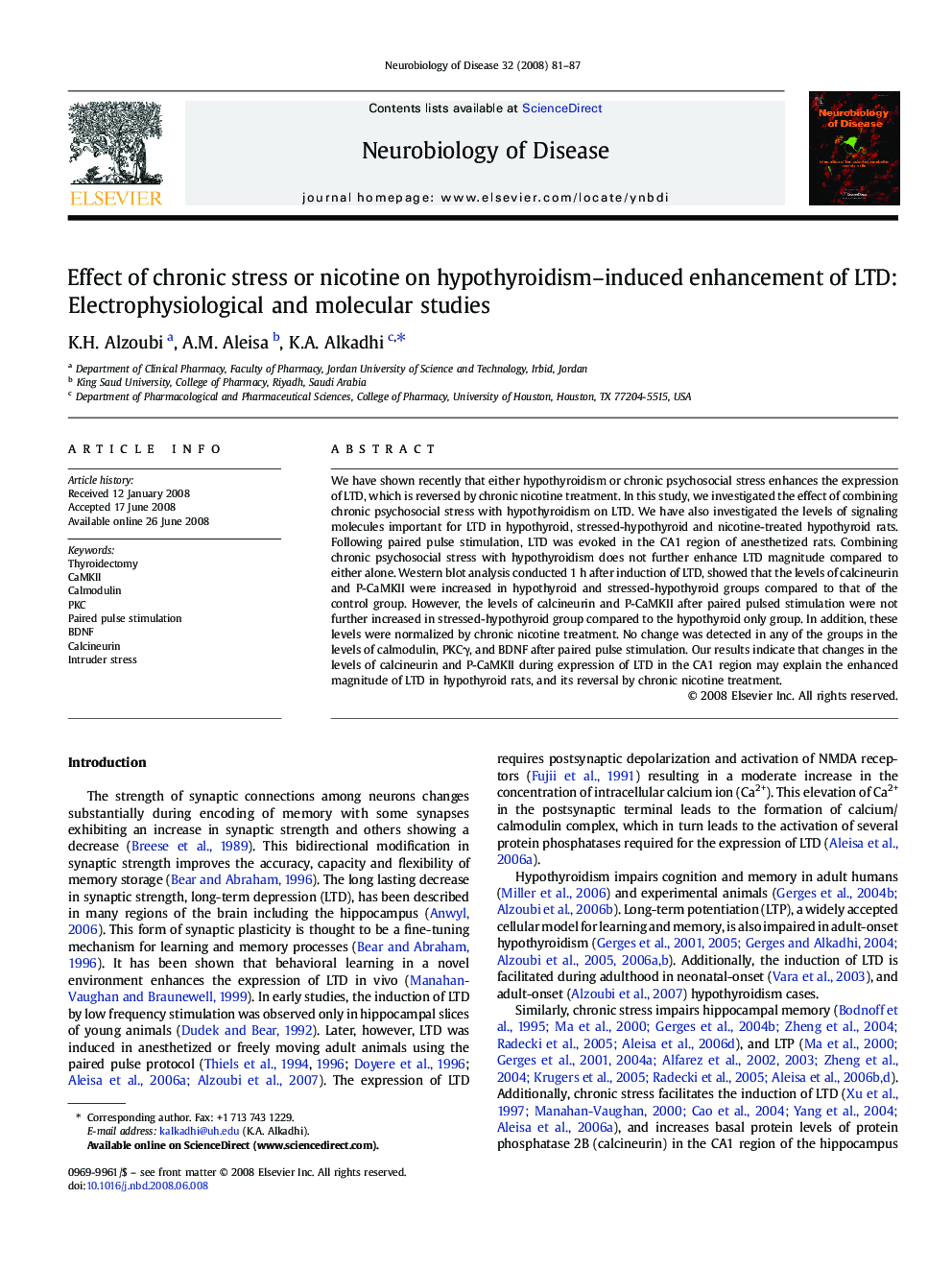| Article ID | Journal | Published Year | Pages | File Type |
|---|---|---|---|---|
| 3070141 | Neurobiology of Disease | 2008 | 7 Pages |
Abstract
We have shown recently that either hypothyroidism or chronic psychosocial stress enhances the expression of LTD, which is reversed by chronic nicotine treatment. In this study, we investigated the effect of combining chronic psychosocial stress with hypothyroidism on LTD. We have also investigated the levels of signaling molecules important for LTD in hypothyroid, stressed-hypothyroid and nicotine-treated hypothyroid rats. Following paired pulse stimulation, LTD was evoked in the CA1 region of anesthetized rats. Combining chronic psychosocial stress with hypothyroidism does not further enhance LTD magnitude compared to either alone. Western blot analysis conducted 1 h after induction of LTD, showed that the levels of calcineurin and P-CaMKII were increased in hypothyroid and stressed-hypothyroid groups compared to that of the control group. However, the levels of calcineurin and P-CaMKII after paired pulsed stimulation were not further increased in stressed-hypothyroid group compared to the hypothyroid only group. In addition, these levels were normalized by chronic nicotine treatment. No change was detected in any of the groups in the levels of calmodulin, PKCγ, and BDNF after paired pulse stimulation. Our results indicate that changes in the levels of calcineurin and P-CaMKII during expression of LTD in the CA1 region may explain the enhanced magnitude of LTD in hypothyroid rats, and its reversal by chronic nicotine treatment.
Related Topics
Life Sciences
Neuroscience
Neurology
Authors
K.H. Alzoubi, A.M. Aleisa, K.A. Alkadhi,
